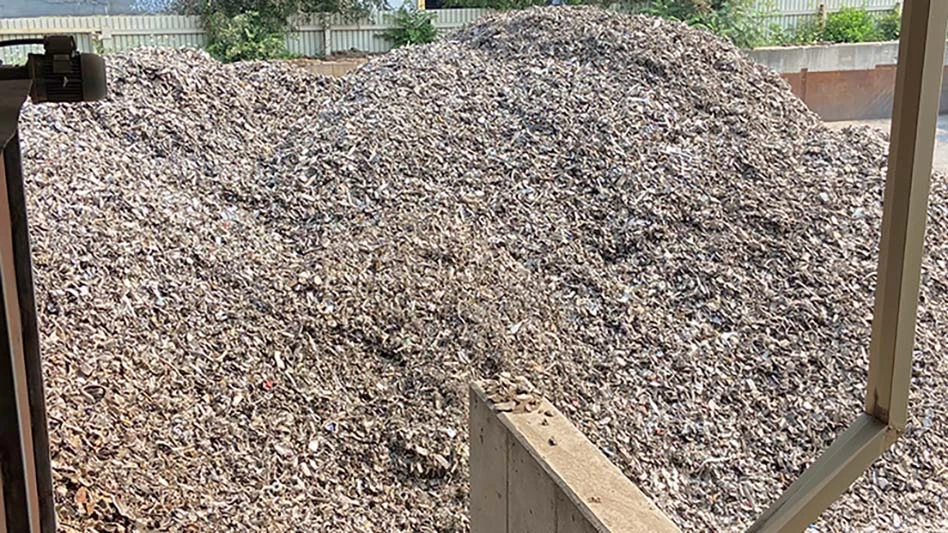Recycler Adams Plastics LP, Rolling Meadows, Illinois, reached a juncture where a test of its mettle was its ability to ditch the metal from its material stream.
The company’s recycling division sorts, bales, grinds and sells a wide range of plastics from industrial sources. The company also converts polyvinyl chloride film into finished products via slitting, laminating and other operations.

In 2014, when Adams moved from Chicago to a new, larger facility in Rolling Meadows, it acquired its first grinder to take on a new business—a contract to size-reduce parts from Keurig coffee makers, says Peter Silberman, president and owner of Adams Plastics.
“We didn’t know [there was a problem] until our customer called up and said, ‘I’ve got about a pound worth of metal in the regrind,’” Silberman says.
The parts had metal components hidden within the plastic.
Adams called Erie, Pennsylvania- based Eriez Manufacturing Co., a manufacturer of magnetic equipment that removes metal from various materials, looking for a magnetic separator that could remove large pieces of ferrous metal and fines, says Warren Haseley, senior application sales for Eriez’s Midwest district office.
“Peter wanted something that was going to be very effective [and] very functional,” he explains.
Haseley recommended Eriez’s Easy-to-Clean TGH-2 drawer grate in-housing separator, which features two rows of staggered rare-earth tube magnets. The separator has scrapers and wipers to remove metal from the magnets when the operator slides open the housing’s doors. That cleaning process takes only a few seconds.
The separator removes fines from the plastic after it is ground.
Haseley says the low-density ground plastics Adams was handling flowed freely, making them suited to passing through a grate magnet. “And putting it where the flow wasn’t too fast—right after it was being chopped—I knew that was going to be an ideal location for it.”
Adams bought a second TGH-2 when it purchased a second grinder. It later bought a hand-held magnetic device to check for metal fines in gaylords of ground plastic, Silberman says.
Fitting the separators into the production lines was relatively simple, he adds. Adams had to build a support rack to hold the first separator in place at the grinder outlet. The second separator slid into a sleeve on its grinder.
Silberman says, “I’ve seen zero metal problem” since Adams installed the Eriez magnets.
He adds that Adams’ customers that are extruding and making pellets “don’t want to see metal in their screens. Metal messes up their extruding systems.”
He says Adams risks regrind being rejected if it contains metals. “Rejects are very expensive for both companies.”
Haseley says the only wear items on the TGH-2 are the wipers.
So far, Adams hasn’t had to change the wipers on the first magnetic separator it installed in 2015.
Get curated news on YOUR industry.
Enter your email to receive our newsletters.

Explore the Fall 2019 Plastics Recycling Issue
Check out more from this issue and find your next story to read.
Latest from Recycling Today
- Ship dismantlers navigate new regulatory regimen
- Gershow announces several community involvement projects
- McKinsey identifies engineering polymers as a recycling opportunity
- Metso acquisition focuses on mill liner recycling
- Malaysian customs office seizes scrap containers
- Lindner establishes Brazil subsidiary
- Tire recycling veteran predicts growth in pyrolysis
- ShearCore adds FC95 to concrete processor line






